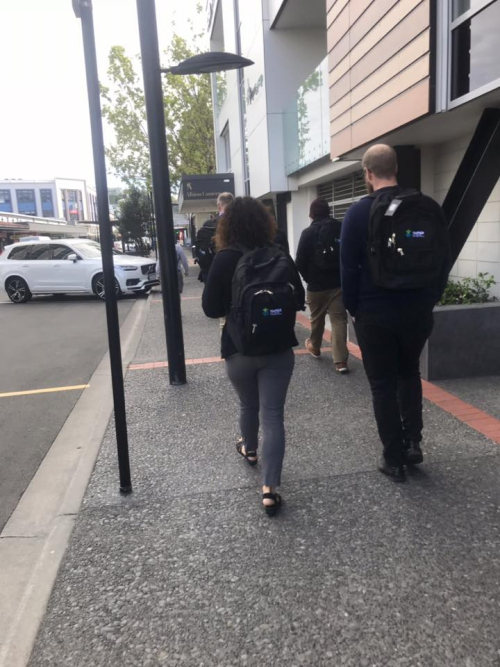

Hawke’s Bay residents are being urged to use the ninth anniversary of the 2011 Japan earthquake and tsunami to practise their evacuation routes, so they can act quickly if a similar disaster strikes our shores.
Hawke’s Bay Civil Defence Emergency Management Group Manager Ian Macdonald encouraged families, communities, businesses, schools and childcare centres to identify their nearest safe zone and practise their “tsunami hīkoi” to higher ground or inland during the week of 9 to 15 March.
Mr Macdonald said although rare events, earthquakes and tsunami had the potential to devastate coastal communities.
“In the 2011 Japan earthquake and tsunami, it was the people who acted on the earthquake as their warning and evacuated to safe locations who survived.
“That’s one of the reasons Hawke's Bay Civil Defence Emergency Management Group places a strong emphasis on preparing for a tsunami evacuation as part of the anniversary of this event, which struck on 11 March 2011.
“Knowing the natural warning signs and the right action to take can save lives.”
Mr Macdonald said many Hawke’s Bay communities live near, or visit, places that are at risk of tsunami and it was vital they knew the right action to take.
“We want people to make sure they have a household emergency plan (you can find everything you need to make a plan with your family at https://getready.govt.nz/), and practise their tsunami hīkoi to high ground or inland by foot or bike.
“We know practising these two things works as it helped save more than 95 per cent of people who safely evacuated in time in the Japan earthquake and tsunami.
“Check if your home, workplace or your children’ school or early childhood education centre is in a tsunami evacuation zone by visitingwww.hbemergency.govt.nz/hazards/tsunami/
“For a local-source tsunami, which could arrive in minutes, there won’t be time for any official warnings.
“You should recognise the natural warning signs and act immediately.
“If you are at the coast and feel a strong earthquake that makes it hard to stand up, or a long earthquake that lasts a minute or more, drop, cover and hold and when the shaking stops, move immediately to the nearest high ground, or as far inland as you can.
“Other natural warning signs may include a sudden rise or fall in sea level; or loud and unusual noises from the sea.
Mr Macdonald said in the same way we practice “drop, cover and hold” and fire drills, we should also practise our “long or strong, get gone” evacuation route.
For more information, visit www.hbemergency.govt.nz
3 March 2020
Disclaimers and Copyright
While every endeavour has been taken by the Hawke's Bay Emergency Management to ensure that the information on this website is
accurate and up to date, Hawke's Bay Emergency Management shall not be liable for any loss suffered through the use, directly or indirectly, of information on this website. Information contained has been assembled in good faith.
Some of the information available in this site is from the New Zealand Public domain and supplied by relevant
government agencies. Hawke's Bay Emergency Management cannot accept any liability for its accuracy or content.
Portions of the information and material on this site, including data, pages, documents, online
graphics and images are protected by copyright, unless specifically notified to the contrary. Externally sourced
information or material is copyright to the respective provider.
© Hawke's Bay Emergency Management - hbemergency.govt.nz / / enquiries@hbemergency.govt.nz